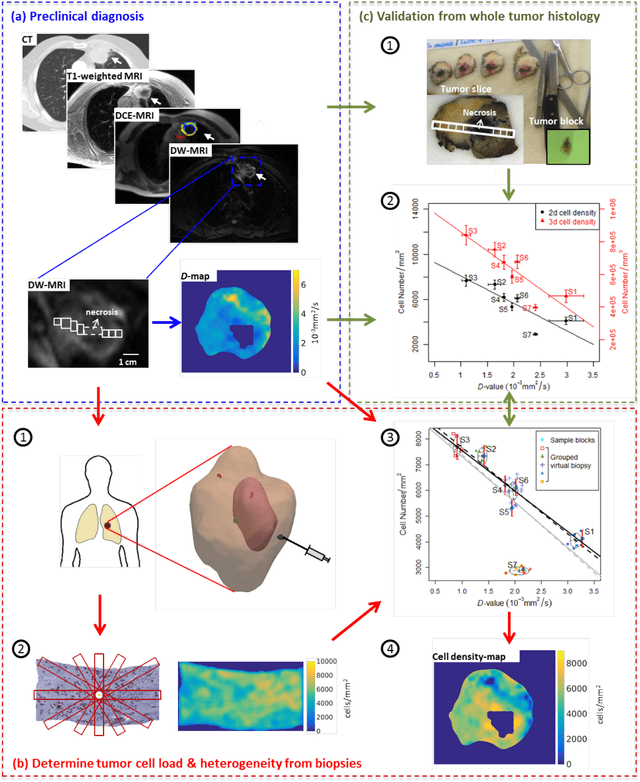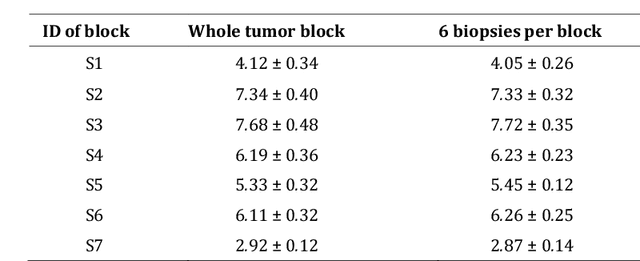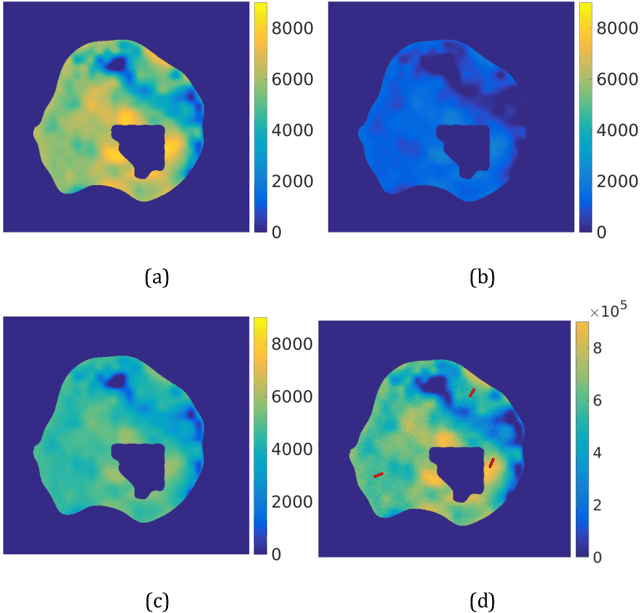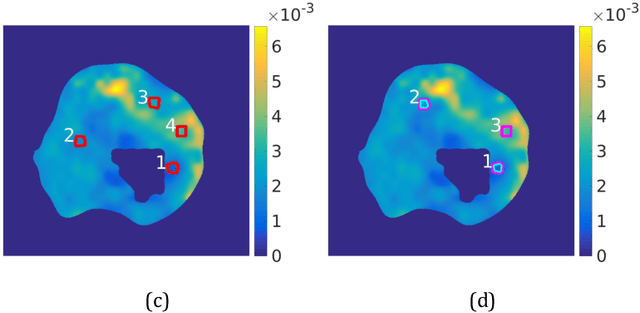Irene E. Vignon-Clementel
Diffusion-weighted MRI-guided needle biopsies permit quantitative tumor heterogeneity assessment and cell load estimation
Mar 01, 2021



Abstract:Quantitative information on tumor heterogeneity and cell load could assist in designing effective and refined personalized treatment strategies. It was recently shown by us that such information can be inferred from the diffusion parameter D derived from the diffusion-weighted MRI (DWI) if a relation between D and cell density can be established. However, such relation cannot a priori be assumed to be constant for all patients and tumor types. Hence to assist in clinical decisions in palliative settings, the relation needs to be established without tumor resection. It is here demonstrated that biopsies may contain sufficient information for this purpose if the localization of biopsies is chosen as systematically elaborated in this paper. A superpixel-based method for automated optimal localization of biopsies from the DWI D-map is proposed. The performance of the DWI-guided procedure is evaluated by extensive simulations of biopsies. Needle biopsies yield sufficient histological information to establish a quantitative relationship between D-value and cell density, provided they are taken from regions with high, intermediate, and low D-value in DWI. The automated localization of the biopsy regions is demonstrated from a NSCLC patient tumor. In this case, even two or three biopsies give a reasonable estimate. Simulations of needle biopsies under different conditions indicate that the DWI-guidance highly improves the estimation results. Tumor cellularity and heterogeneity in solid tumors may be reliably investigated from DWI and a few needle biopsies that are sampled in regions of well-separated D-values, excluding adipose tissue. This procedure could provide a way of embedding in the clinical workflow assistance in cancer diagnosis and treatment based on personalized information.
 Add to Chrome
Add to Chrome Add to Firefox
Add to Firefox Add to Edge
Add to Edge